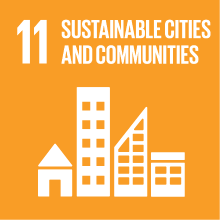ECOLOGY AND SUSTAINABILITY FOR CULTURAL HERITAGE
- Academic year
- 2019/2020 Syllabus of previous years
- Official course title
- ECOLOGY AND SUSTAINABILITY FOR CULTURAL HERITAGE
- Course code
- CM0516 (AF:281958 AR:165979)
- Teaching language
- English
- Modality
- On campus classes
- ECTS credits
- 6
- Degree level
- Master's Degree Programme (DM270)
- Academic Discipline
- BIO/07
- Period
- 2nd Semester
- Course year
- 2
- Where
- VENEZIA
Contribution of the course to the overall degree programme goals
Expected learning outcomes
Pre-requirements
Contents
'Ecology and sustainability for cultural heritage'? Presentation of the course
Landscape, geography and the environment
A short story of heritage, from the Grand Tour to mass tourism
Ecology in the Anthropocene: Environmental Humanities
Whose heritage?
Environmentalism: who's involved?
UN's 2030 Agenda for Sustainable Development: what of heritage?
UNESCO and the World Heritage List
Cities as heritage
A city like no other? Fragile Venice
Environmental and heritage assessment
Mitigation, adaption, resilience
Climate change and heritage: the case of the Mediterranean's World Heritage sites
Two cases: San Marco and the Dolomites
The issue of decontamination: brownfields and industrial heritage
Sustainable tourism?
(Sustainable) local development?
Furthermore two field trips will be organised in significant heritage sites.
Referral texts
- Cosgrove D. (1984). Social formation and symbolic landscape. Madison, University of Wisconsin Press
- Farinelli F. (2003). Blinding Polyphemus: Geography and the Models of the World. Kolkata: Seagull Books
- id. (1981) Storia del concetto geografico di paesaggio. Milano: Electa
Lesson 3 - A short story of heritage, from the Grand Tour to mass tourism
- Choay F. (2001 [1992]). The Invention of the Historic Monument. Cambridge, Cambridge University Press
- Lowenthal D. (2015 [1985]). The Past is a Foreign Country. Cambridge, Cambridge University Press
- Pendlebury J. (2009). Conservation in the Age of Consensus. Oxford, Routledge
Lesson 4 - Ecology in the Anthropocene: Environmental Humanities
- Armiero M., Barca S. (2004). Storia dell’ambiente. Una introduzione. Roma: Carocci
- Rose D. B., van Dooren J., Chrulew M., Cooke S., Kearnes M. & O’Gormand E. (2012). Thinking Through the Environment, Unsettling the Humanities. Environmental Humanities 1, 1-5
- Sörlin S. (2012). Environmental Humanities: Why Should Biologists Interested in the Environment Take the Humanities Seriously?. BioScience, Volume 62, Issue 9, September 2012, Pages 788–789
Lesson 5 - Whose heritage?
- Ashworth G.J., Graham, B.J. & Tunbridge J.E. (2000). A Geography of Heritage: Power, Culture and Economy. London: Arnold
- Smith L. (2006). Uses of Heritage. Oxford, Routledge
Lesson 6 - Environmentalism: who's involved?
- Bobbio, L. (2011). Territorial Conflicts: Six Interpretations. TeMA - Journal of Land Use, Mobility and Environment, 4(4), 79-88. https://doi.org/10.6092/1970-9870/569
- [in Italian] Pellizzoni L. (2011). Conflitti ambientali. Esperti, politica, istituzioni nelle controversie ecologiche. Bologna: Il Mulino
Lesson 7 - UN's 2030 Agenda for Sustainable Development: what of heritage?
- United Nations (2015). Transforming our World: The 2030 Agenda for Sustainable Development
- Culture2030Goal campaign (2019), “Culture in the Implementation of the 2030 Agenda”. Published in Barcelona, Paris, Harare, Sydney, Montreal, The Hague and Brussels, in the frame of the first UN SDG Summit taking place on 24-25 September 2019
Lesson 8 - UNESCO and the World Heritage List
- UNESCO (1972), Convention Concerning the Protection of the World Cultural and Natural Heritage
- WHC (2019 [1978]), The Operational Guidelines for the Implementation of the World Heritage Convention
Lesson 9 - Cities as heritage
(see in part. from previous lessons Ashworth, Choay, Lowenthal, Pendlebury, Smith)
- UNESCO (2011), Recommendation on the Historic Urban Landscape
Lesson 10 - Fragile Venice
- City of Venice (2013), Venice and its lagoon UNESCO World Heritage Site. The Management Plan 2012-2018
- Gasparoli P., Trovò F. (2014). Venezia fragile. Processi di usura del sistema urbano e possibili mitigazioni. Fragile Venice. Processes of wear on the urban system and possible mitigations (bilingual ed.). Firenze: Altralinea
Lesson 11 - Environmental and heritage assessment
- Glasson, J., Therivel, R. Introduction To Environmental Impact Assessment (5th ed.), Oxford: Routledge
- ICOMOS (2011). Guidance on Heritage Impact Assessments for Cultural World Heritage Properties. A publication of the International Council on Monuments and Sites
_____________________
Forum of Ministers of Culture (2019). Culture and public policy for sustainable development. Available at:
https://unesdoc.unesco.org/ark:/48223/pf0000371488?fbclid=IwAR0oA4B4iAjfXRWB_AchX8VWFjLdNjYoXhMmVheolbrQY9tkt_8bEU1V1fY
Reimann L., Vafeidis A. T., Brown S., Hinkel J., Tol R. S. J. (2018). Mediterranean UNESCO World Heritage at risk from coastal flooding and erosion due to sea-level rise. Nature Communications, n. 9. Available at: https://www.nature.com/articles/s41
Assessment methods
The essay must be handed to the docent before the (oral) exam.
Furthermore one paper from the following journals will have to be presented, commented and discussed:
Journal of Cultural Heritage Management and Sustainable Development - ISSN: 2044-1266
Journal of Cultural Heritage - ISSN: 1296-2074
International Journal Of Environmental Science & Sustainable Development - ISSN: 2357-0857
Type of exam
Teaching methods
2030 Agenda for Sustainable Development Goals
This subject deals with topics related to the macro-area "Cities, infrastructure and social capital" and contributes to the achievement of one or more goals of U. N. Agenda for Sustainable Development


